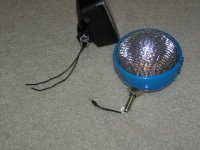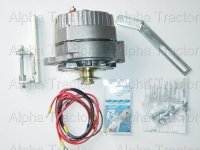8N_John
Silver Member
I am planning on hooking up headlights (standard replacement) and a backlight (50watt/4amp) to my 8N this weekend (see pic of headlight and backlight). Have some questions on installation.
How do I hook to my 12V battery? Each headlight has one wire coming out of it and the backlight has 2 wires (see pics). Do I use both wires on the backlight?? I believe the positive battery cable has a small wire coming out of it near the terminal connection- do I hook into this?
What type (amp) toggle switch should I buy and how do I connect (I"d like all lights to be connected to one switch). Where is the best place to put the toggle switch?
Is there a recommended place to hook up the backlight where it"s least likely to get damaged?
Any other tricks in hooking up the lights to a 12V system?...I"m not good with wiring so any tips will help.
How do I hook to my 12V battery? Each headlight has one wire coming out of it and the backlight has 2 wires (see pics). Do I use both wires on the backlight?? I believe the positive battery cable has a small wire coming out of it near the terminal connection- do I hook into this?
What type (amp) toggle switch should I buy and how do I connect (I"d like all lights to be connected to one switch). Where is the best place to put the toggle switch?
Is there a recommended place to hook up the backlight where it"s least likely to get damaged?
Any other tricks in hooking up the lights to a 12V system?...I"m not good with wiring so any tips will help.

